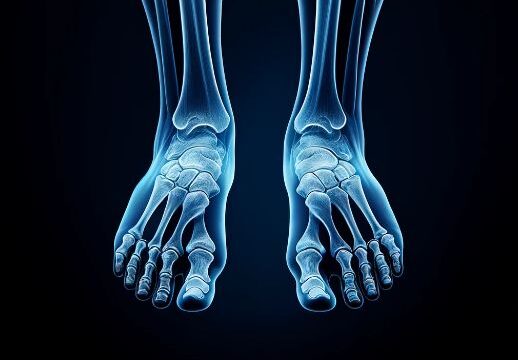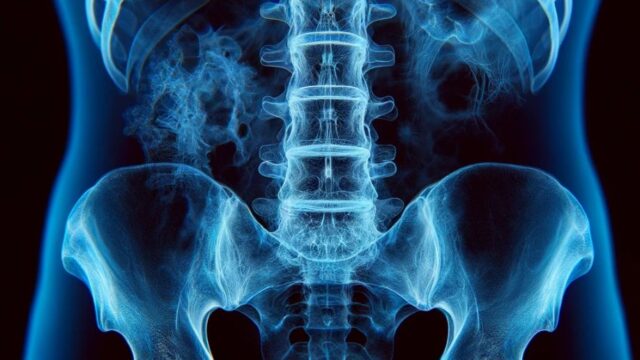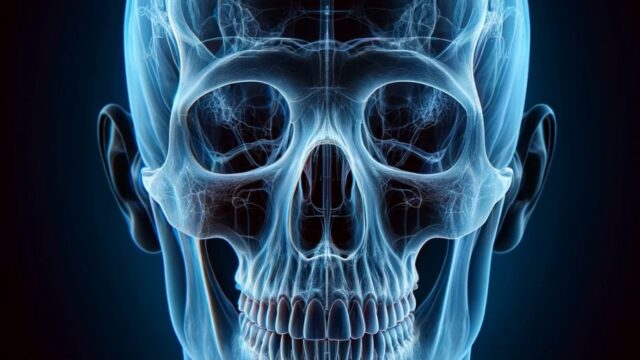Towne view
Purpose
Observation of skull fractures, dislocations, neoplastic lesions, Paget’s disease, etc.
Detection of internal and external displacement of skull fractures, and identification of foreign bodies.
Excellent visualization of the occipital bone.
Observation of the sella turcica and posterior clinoid processes projected within the petrous pyramids and foramen magnum.
Prior confirmation
Confirm the purpose of the examination. Remove any objects that may obstruct the view (hairpins, glasses, earrings, necklaces, dentures, etc.).
Positioning
Supine position (standing or sitting position is also acceptable).
Align the mid-sagittal plane with the long axis of the film.
From the head side, ensure that the distance between both external auditory meatuses and the film is equal.
Place a marker (R or L).
Retract the chin and align the orbitomeatal (OM) line perpendicular to the film.
-> If chin retraction is difficult, align the Frankfurt horizontal plane vertically. (In this case, the angle of oblique incidence is set to 40°.)
CR, distance, field size
CR : Align the crosshair of the radiation field with the mid-sagittal plane, and position the other crosshair to pass through the external auditory meatus, inclined at a 30° angle in the head-to-toe direction.
Distance : 100cm
FIeld size : Include the entire head, including the soft tissues.
Exposure condition
75kV / 25mAs
Grid ( + )
Suspend respiration.
Image, check-point
Normal (Radiopaedia)
The suture line is projected at the midline.
The mandible is projected symmetrically.
The chin is included.
The outer and inner tables are observable.
The sella turcica and posterior clinoid processes are depicted within the foramen magnum.
Adjusting the image density allows visualization of the zygomatic arch.
Videos
Related materials














